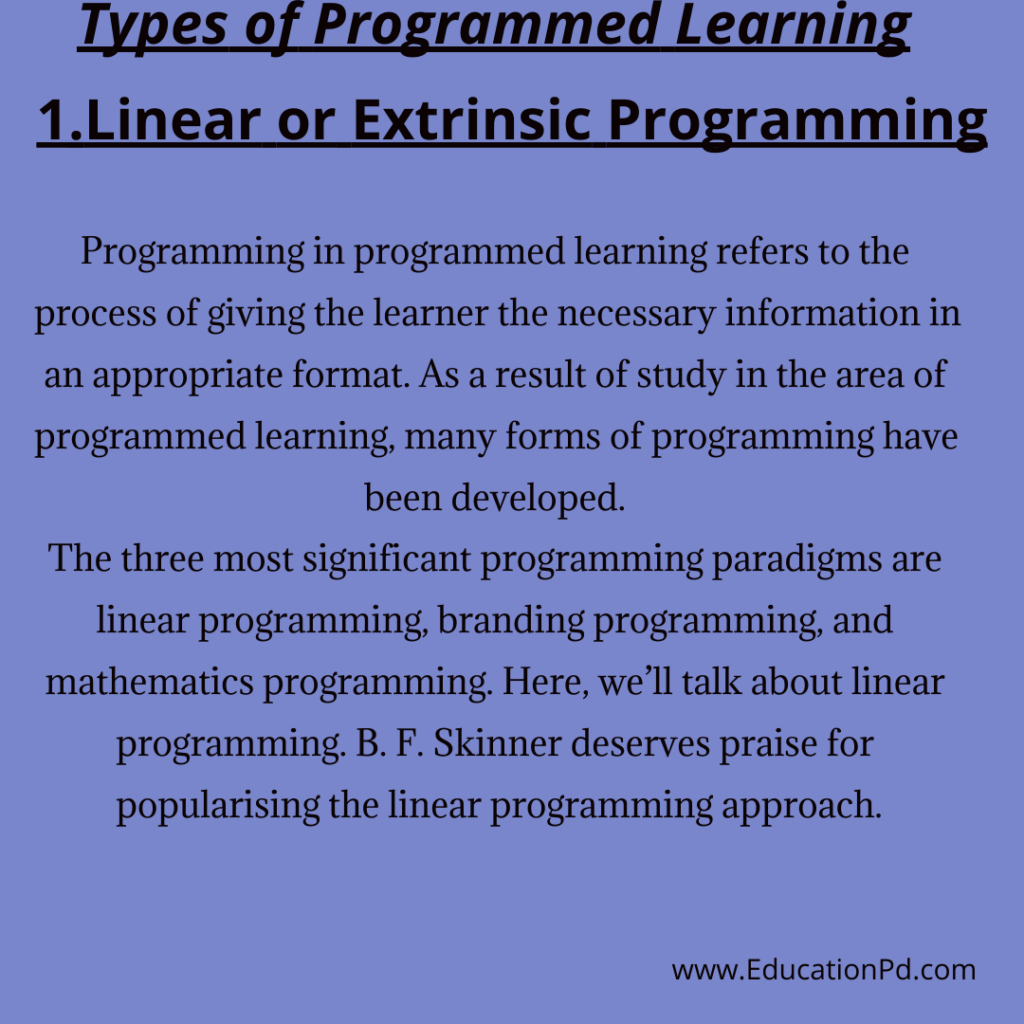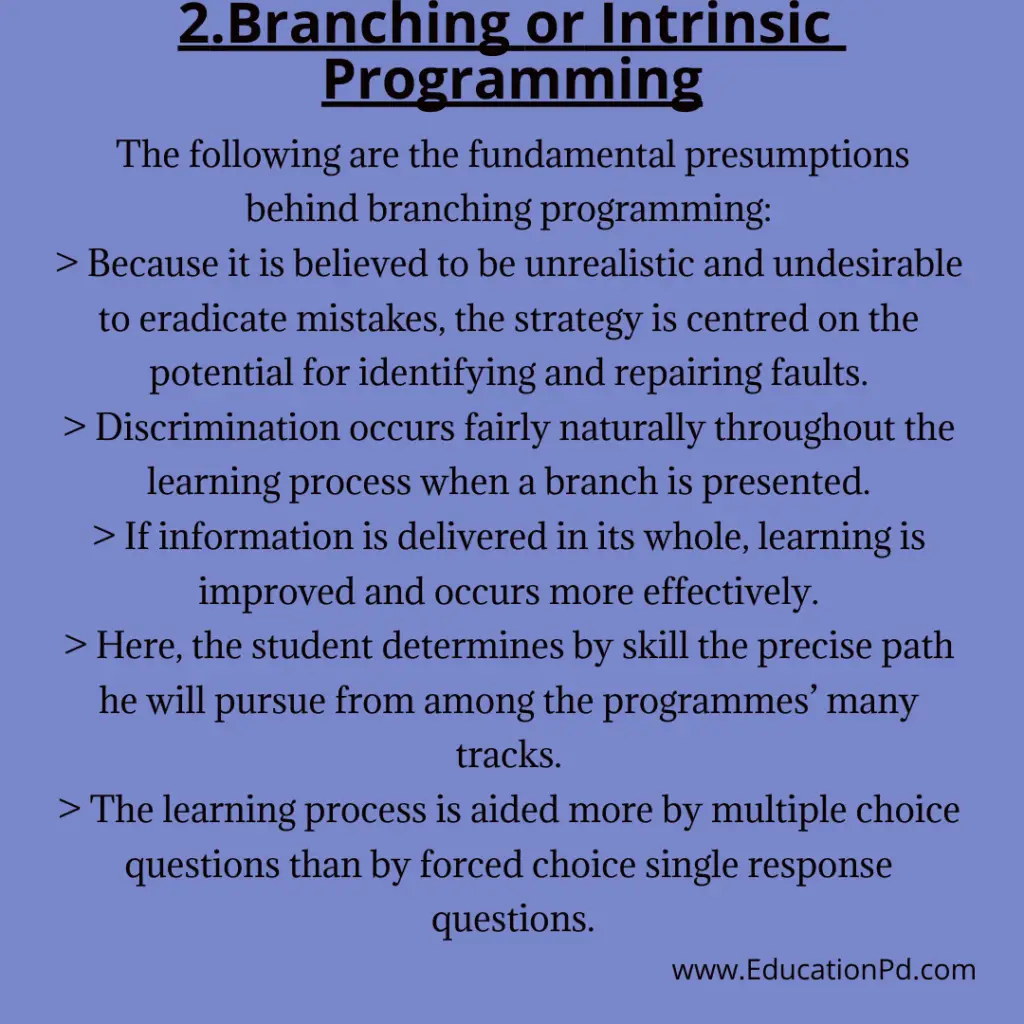Back to: Educational Technology in Education B.ed Notes, M.A Notes, IGNOU Notes
Types of Programmed Learning
Modes of preparation of programmes are called styles or types of programming. There are various styles of programming that are available but most important of them are:
- The Linear Programming developed by Skinner.
- The Branching Programming developed by Crowder.

Linear or Extrinsic Programming
Programming in programmed learning refers to the process of giving the learner the necessary information in an appropriate format. As a result of study in the area of programmed learning, many forms of programming have been developed.
The three most significant programming paradigms are linear programming, branding programming, and mathematics programming. Here, we’ll talk about linear programming. B. F. Skinner deserves praise for popularising the linear programming approach.
It has a close connection to his theory of operant conditioning. It is predicated on the idea that human behaviour may be gradually modified or trained with the right reinforcement for each desired response. Therefore, in linear programming, the course content is organised into a number of purposeful little stages, known as frames. The learner receives each of these frames in the predetermined order, one at a time. At each level, the student must actively participate. The student receives feedback on whether his response was accurate right after after giving one. It motivates him to learn the following frame in the planned sequence and encourages his behaviour. By proceeding from one step to another, the learner may thus be able to acquire the desired leaning experience.
In the case of programmed learning, the frame order and learning route are organised and linear. It is known as linear programming for this reason. The linear programming is also known as extrinsic programming since the programmer controls it.
The linear programming places a lot of emphasis on ensuring that the replies are given in a precise order. To do this, the stages are intentionally created so short and they are organised in a manner that the learner gives only accurate answers throughout the teaching process and, as a result, only receives positive reinforcement. If a student doesn’t provide the appropriate response to a certain frame, he may be asked to repeat the frame or be taught the appropriate response. In any case, he is not allowed to move to the next frame unless he responds correctly to the present frame.

Branching or Intrinsic Programming
Branching programming offers an intrinsic organisation in contrast to linear programming since it is not managed extrinsically by the programmer. It gives the student freedom of choice and the ability to customise the training to meet his requirements. The following are the fundamental presumptions behind branching programming:
- Because it is believed to be unrealistic and undesirable to eradicate mistakes, the strategy is centred on the potential for identifying and repairing faults.
- Discrimination occurs fairly naturally throughout the learning process when a branch is presented.
- If information is delivered in its whole, learning is improved and occurs more effectively.
- Here, the student determines by skill the precise path he will pursue from among the programmes’ many tracks.
- The learning process is aided more by multiple choice questions than by forced choice single response questions.

Procedure for Branching Programming
Based on the over stated assumptions, the procedure for branching programming may be outlined as below:
- The teaching materials are broken up into chunks of information known as frames. In a frame, a lot of information is presented. A page or simply a few paragraphs might include this information. Thus, compared to linear programming, each frame is substantially bigger.
- The student moves around the frame. After then, he must choose a response to a series of questions related to the frame’s learning content. He must use discrimination and select the one correct response.
- If the student responds properly, he advances in the lesson; if not, he is redirected or “branched” to one or more remedial frames. These frames reframe the situation, ask him questions to elicit a stiff response and expose his prior errors, and then bring him back to the first frame.
- The cycle continues until the student completes the entire curriculum at his own speed.
